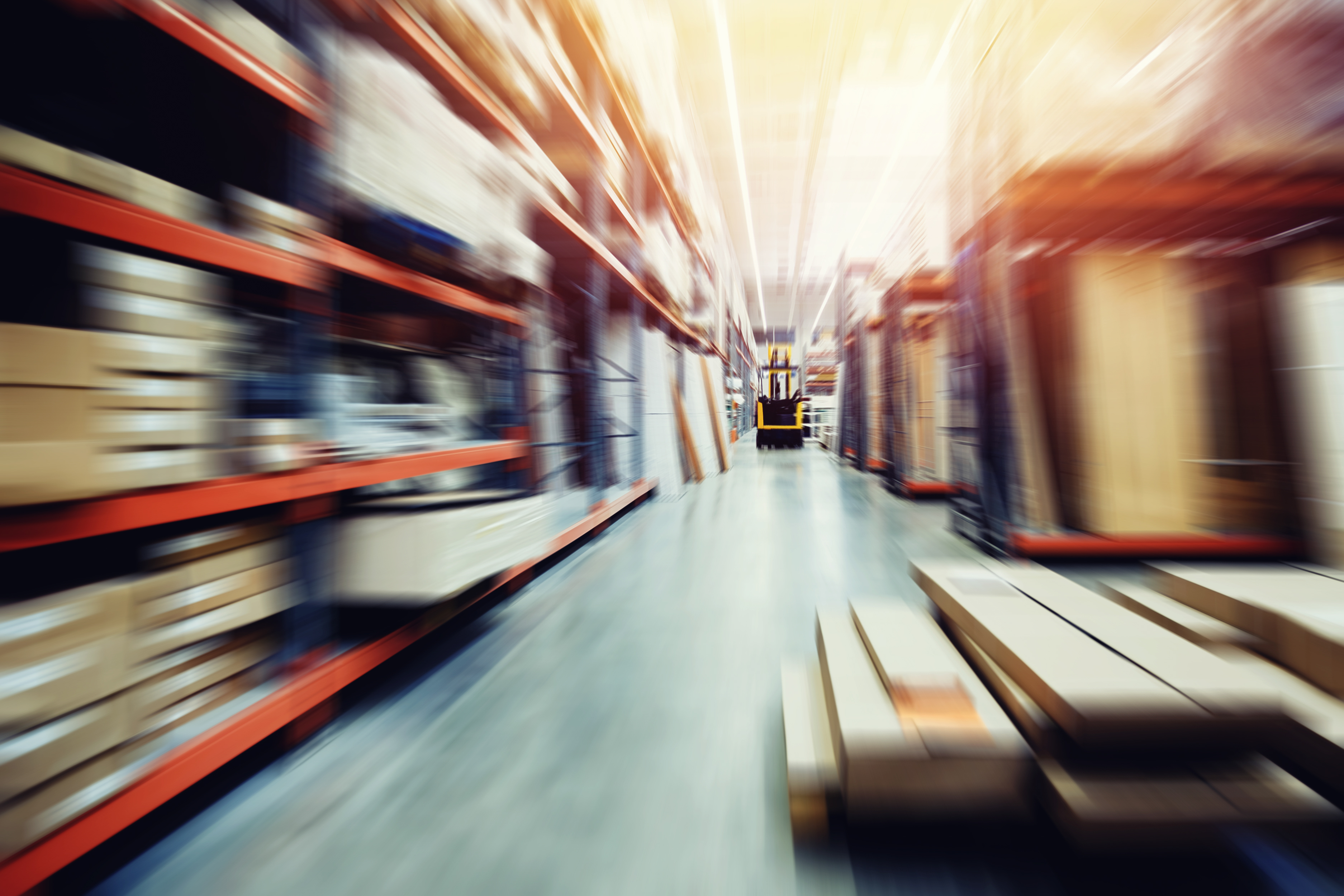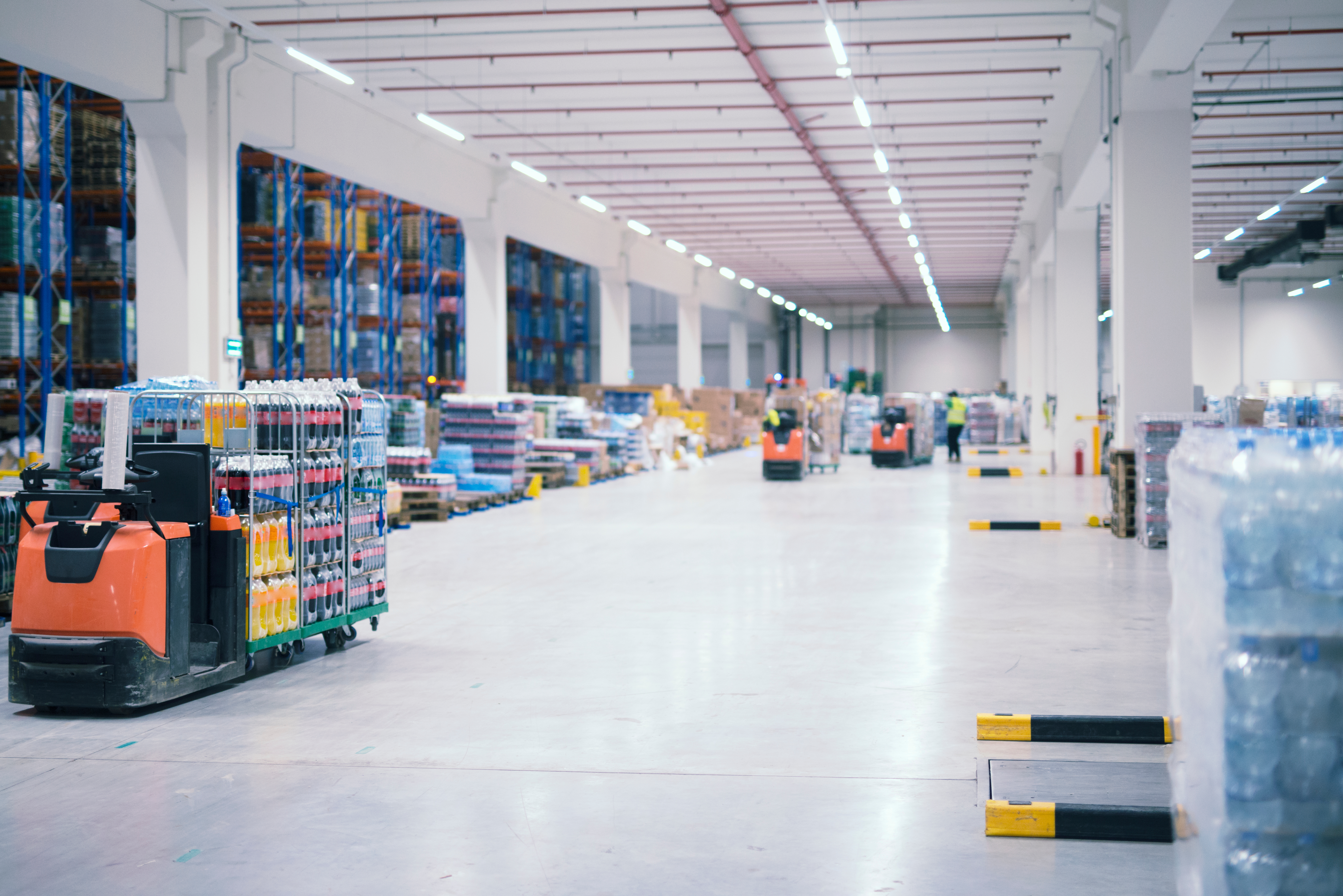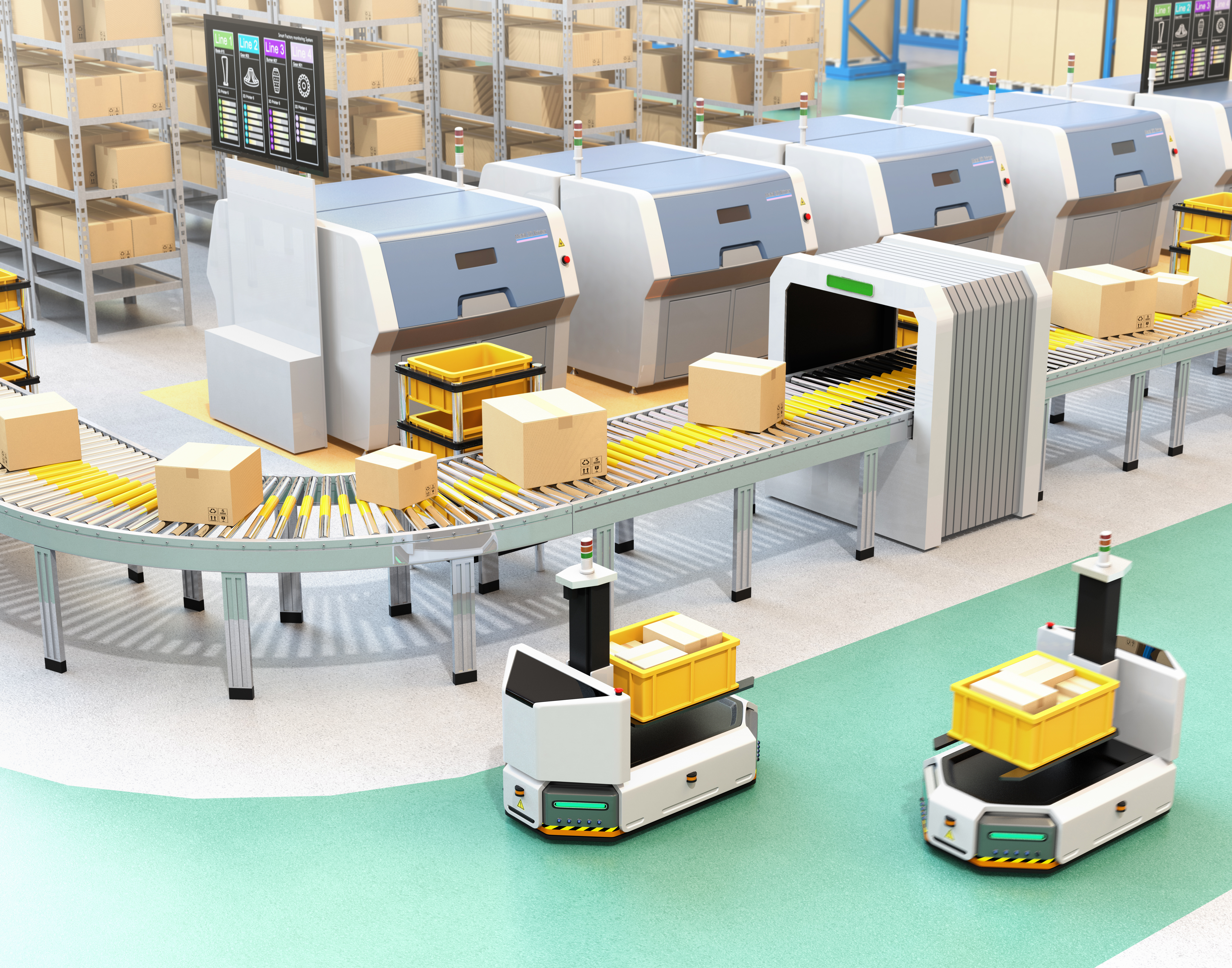
by Lean Material Handling | Nov 14, 2019 | Factory, Intra-logistics, Lean Manufacturing, Lean Production, Material Handling
Industries require top of the range machines for efficiency and effectiveness purposes. On that account, material handling systems come in handy to deliver fantastic results. They entail equipment that can aid in the mobilization of loads within an area. Thus, they can pick and move products from one place to another seamlessly. The systems primarily operate perfectly due to top-notch technology. They include appliances, tools, vehicles and storage units alike. Well, let’s unearth the key elements around the material handling systems.
Types
Material handling systems fall under four main categories as follows;
-
Storage equipment
-
Industrial trucks
-
Engineered systems
-
Bulk handling equipment
Storage Equipment
It is the equipment that holds materials waiting to be moved to another location for use. Alternatively, it stores products that have already been transported. One vital feature in this kind is that they are not automatic. Depending on the sector, the handling systems are normally spacious. Thus, it allows the stock to be in great condition without any damages. It also makes the items presentable and neat at the end of the production process. In this collection, you will find essential machines such as shelving, sliding racks, and pallet racks. In addition to that, there are stacking frames, push-back racks, and drive-through racks as well.
They are trucks that aid in transportation in various industries. Industrial trucks have different specs depending on their designs. They can be large or small vehicles that can be operated by hand. Most of them are automated to make work more straightforward and painless. The manual trucks are also a form of storage when the items need to be moved after some time. They include pallet trucks that function primarily as mobility tools. AGVs are part of industrial trucks that are utterly powered by other devices. What’s more, pallet jacks, order pickers, side-loaders, and walking stackers are in the group.
Engineered Systems
The material handling systems are also automated to suit the manufacturing process. They come as a complete package with shelves, aisles, and racks. In terms of performance, they are practical as they entail transportation and storage. Furthermore, some machines fully utilize the work of a computer. On the flip side, others will need manual guidance by a small margin. The gadgets have unique characteristics of automatic storage plus retrieval system. Noteworthy examples are conveyor systems, AGVs, and robotics delivery systems.
Bulk Handling Equipment
It handles goods such as food, liquids, beverages, metals, and minerals. The products are in large quantities as the name bulk implies. Essentially, the equipment is utilized for mobility reasons. It transports the loose materials for one pint to another with the utmost safety. The direction it moves is both vertical and horizontal using different bulk handling equipment. The conveyor belt goes sideways while the elevators transport upwards. Hoppers and drummers help to filter out the loose matter for packaging. Under this type, stackers, reclaimers, silos, grain, and bucket elevators are present. The appliances work complementarily to make the procedure triumphant and undemanding.

by Lean Material Handling | Nov 14, 2019 | Factory, Intra-logistics, Lean Manufacturing, Lean Production, Material Handling, Six Sigma
Tugger carts are equipment used to transport materials in various industries. The carts have a towable specification and can also operate manually. Industrial tugger carts form a train when they move goods in bulk. It is commonly known as the tugger train that involves a chain of carts. Their effectiveness is out of this world since, within a short time, one can complete tasks. Workers can move loads painlessly from one location to another. In addition to that, they are used to handle materials in a facility.
Specifications
Industrial tugger carts come in different dimensions or sizes that meet the clients’ needs. The carts are crafted from polyurethane casters so that the noise level is minimal. In addition to that, it guarantees longevity due to the top of the line material. Some carts also come with connection capacities. This way, if you need to move all of them at once, it is possible. The highlight of the feature is that you can transport items faster.
What’s more, the direction is flexible since the cart can move to the right and left with ease. It works ideally when you need to relocate bulky products in a safe mode. Maneuvering through the different paths is seamless with a tugger cart due to its versatility. Another important characteristic is the battery life depending on the machine. It lasts incredibly for hours without the need to recharges the batteries.
Benefits
The carts bring bountiful benefits to the table for all users across the various fields. With the arrays of stipulations, they have countless upper sides. Have a look at the advantages of using a tugger cart.
Safety
Industrial tugger carts have safety stop switches as part of the package. In that case, you can press the switch to avert any injury or damages. You rest assured that with the feature, you will get high safety standards at the company. It comes in handy since any manufacturing process is prone to accidents. To be on the safe side, the switch is definitely essential.
Speed
It is of the essence that tugger carts provide the quickest mobility to the industries. The products come with an awesome speed of about 0-3 mph. For this reason, they can move forward and backward at a fast pace. It means that the operator can have utter control of the device at all times. Furthermore, one can move several items making the procedure time-effective.
Dual Use
Bespoke tugger carts are usable for both outdoors and indoors purposes. Therefore, you can move the materials from the warehouse to an outside location comfortably. They can withstand different terrain due to its world-class design. If the area is sloppy, the cart can move without any hustle. The heavy-duty material is there is to safeguard it from toppling over.
Flexibility
As aforementioned, industrial tugger carts are highly flexible in mobility. Thus, if it operates manually you will not struggle pulling it. The machine comes with a turning radius that is almost zero. Navigating through the pathways is not a daunting task at all.

by Lean Material Handling | Nov 14, 2019 | Lean Manufacturing, Lean Production, Material Handling
Industrial robots are an automation technology that has changed the face of manufacturing a great deal. In the old days, even the most dangerous, laborious and repetitive tasks were all done by hand by people. Industrial robots have changed all that, bringing with them consistent precision, accuracy, flexibility, and maximum productivity. Industrial robots are programmed to perform laborious tasks as well as those that are deemed dangerous for humans. This automated technology is exponentially being used in various industries and applications. Industrial robots come in a wide range of models, and their distinguishing characteristics include payload capacity, reach distance, and other features.
Advantages of industrial robots
Increased productivity
Industrial robots are programmed to perform repetitive tasks with greater consistency and better quality. Their output is predictable and precise, unlike workers who can be inconsistent at times. They are almost 100% accurate, resulting in higher quality products with greater consistency. Additionally, they do not need breaks, shift changes, or any disruptions. They attain close to 100% uptime; hence, they can work round-the-clock leading to dramatic increase in production levels, which in turn increases profitability. Moreover, they are continuously updated to maximize their efficiency.
Increased efficiency
Industrial robots are designed to complete tasks faster and at a higher accuracy level. This makes them effective at handling tasks which previously took a lot of time and resources. Unlike humans, industrial robots do not experience fatigue. Due to their higher accuracy levels, they can be utilized in the production of high-quality products, which must meet specific standards of quality. With the optimized production efficiency of industrial robots, companies can incorporate them into their production to maximize efficiency.
Improved workplace safety
Safety is one of the obvious benefits of utilizing industrial robots. Manufacturing processes often place workers at a high risk of physical injury. Talk of the heavy objects, exposure to hazardous chemicals, back-breaking labor, and poor air quality. Industrial robots limit human work in dangerous environments such as in hot temperature environments and where strong chemicals are used. The robots are also used to perform tasks that are highly laborious and repetitive. Overall, industrial robots improve working conditions and workplace safety.
Reduce costs
Using industrial robots in manufacturing is cheaper than employing human workers. Unlike humans, who are paid annual salaries and employment benefits, the only costs associated with robots are maintenance and energy costs. Besides, industrial robots achieve higher production with a minimum number of workers. Therefore, they allow manufacturers to save money.
Reduces production time
Industrial robots do not take breaks, get tired, or lose work focus like humans. With their repeatability and accuracy, they speed up the production time to maximize output. They also use precise amounts of raw materials to reduce waste.
Generally, industrial robots come with many amazing benefits for manufacturers. They optimize the entire production process making it more profitable and efficient. Besides, they’ve become smarter and cheaper, meaning manufacturers can easily incorporate them in their production process and reap the benefits. Industrial robots are an absolute necessity in the competitive manufacturing industry.

by Lean Material Handling | Nov 14, 2019 | Factory, Intra-logistics, Lean Manufacturing, Lean Production, Material Handling
Industrial automation is the use of automated control systems and devices such as robotics and computer software to control industrial processes and machinery, resulting in automatic functioning of industrial processes without the need for significant human intervention. Industrial automation is implemented to make industrial production processes simpler and efficient. Furthermore, it helps to save on labor costs, eliminate the possibility of human error, save time, create a safer working environment, and achieve higher efficiency.
Industrial automation has seamlessly integrated into almost every industry, with automated systems doing everything from manufacturing to packaging, and controlling HVAC systems.
Industrial automation involves the use of a wide range of tools that incorporate different devices and systems that impact on different aspects of the assembling or production process. Some of the industrial automation tools include; PLC’s, PC’s, machine drivers, sensors & actuators, human-machine interface systems, robotics, and communication modules.
Types of industrial automation systems
Fixed automation system – This system is designed to perform fixed and repetitive tasks, and there are rarely any changes made to the operations. This system is commonly employed in mass production systems.
Programmable automation system – In this system, assembling or processing operations can be modified using electronic controls. Reconfiguring this system takes a considerable amount of time and a longer setup, and it’s usually used in batch process production.
Flexible automation system- A flexible system is controlled by computers and offers great flexibility for making changes to the assembling or processing operations. These changes can be implemented quickly through commands. This system is best suited for production processes where the product varies frequently.
Advantages of Industrial Automation
Improved efficiency
Automated systems work faster and harder than humans, and can be deployed for 24 hours in a day 7 days in a week and 365 days a year.
Automation improves quality
Industrial automation cuts out the factor of human error to guarantee products of a higher and consistent quality.
High flexibility
Introducing new production capabilities in a production line results in many training hours for operators. However, automated systems can be programmed to do any task. New production capabilities can be instantly integrated into an assembly line. This allows manufacturers to save money and time on training.
Improved safety
Automated systems remove employees from dangerous work environments such as extreme temperatures, exposure to hazardous chemicals, poor air quality, heavy objects, and other dangerous working conditions.
Higher information accuracy
Manufacturers require production-related data to make informed decisions. Manual collection of data can be costly and prone to human errors. Industrial automation allows for automated and accurate data collection using sensors and devices.
Reduces costs
Industrial automation significantly reduces operating costs. Unlike human operators, an automated system does not require things like paid leave, holidays’ healthcare cover or any employee benefits. Although the initial costs may be high, subsequent costs are lower compared to employed human workers. Moreover, industrial automation achieves higher efficiency with fewer workers which means a higher return on investment.
Industrial automation has truly revolutionized the manufacturing sector in many ways. Manufacturing is certainly a tedious process without automation. Therefore, manufacturers need to adopt industrial automation to streamline production and boost profit margins.

by Lean Material Handling | Nov 14, 2019 | Lean Manufacturing, Lean Production, Material Handling
AGVs are vehicles that operate with the aid of automatic technological systems. They are prominent in the industrial realm since they speed up work. What’s more, the AGVs are the safest to use in the work area. Their usage revolves around relocating materials to other places effectively. On that account, the transportation process is seamless due to the automated machines. The equipment is custom-made to suit every ounce of need for various manufacturers. For this reason, they are widely used in healthcare, communications, cross-docking, warehouses, and textiles sectors. So, how do AGVs work? Let’s delve right into their performance, bearing in mind the extensive benefits.
Methods
AGVS have arrays of techniques that power their movement with sheer simplicity. Have a look at the different ways that make them work.
Wires
For starters, the machines are loaded with wires that assist with the navigation. Usually, the wires are underneath the AGVs to ensure that motion is effortless. Therefore, the wires are linked to sensors that perform impeccably. In addition to that, there are radio frequencies located between the sensors and the wires. They are the key secret behind the movement of the guided vehicles.
Lasers
Moreover, lasers are another convenient way that assists the mobilization of AGVs. Here, two piloting varieties are the ultimate workable solutions. They are Pulsed Laser and Modulated Laser that have virtually endless benefits. Thus, the vehicles have a laser emitter as part of the fitting. Similarly, retro-reflective gadgets collaborate with the lasers to mobilize the apparatus.
Computers
With the digitalization era, AGVs incorporate the use of computers to move materials. They function by controlling how the vehicles maneuver from one section to another. Hence, the use of transponders is eminently common since they are utterly practical. Additionally, the tools use a gyroscope to guide AGVs to the optimum direction. It also helps in re-directing the equipment in case it misses the spot.
The CAD software is notable since it helps the engineer to steer the machines smoothly. It indicates the available paths and the final destination of the load. Traffic controllers also complement in the task completion alike.
Directional Tapes
They are also known as guide tapes since they are productive in the AGVs. The stand out specification entails the utilization of conspicuous magnetic tapes. Their viability surpasses wires because they are removable when the route changes. Further, re-alignment is another option and it means directional tapes are versatile. The automated vehicle cannot function without the proper use of guide tapes. They form a pivotal part of the machine for it to make progress.
Hauling
Ultimately, AGVs operate by attaching them to trailers that can haul the container. It can be in the form of cargo or other products as per the facility. The hauling capability also differs and can range from 20, 40 to 45 inches. The highlight is that the machine is highly flexible. It takes any direction, for instance, backward, sideways and forwards. Hauling is quite an essential characteristic that makes an AGV work incredibly.








